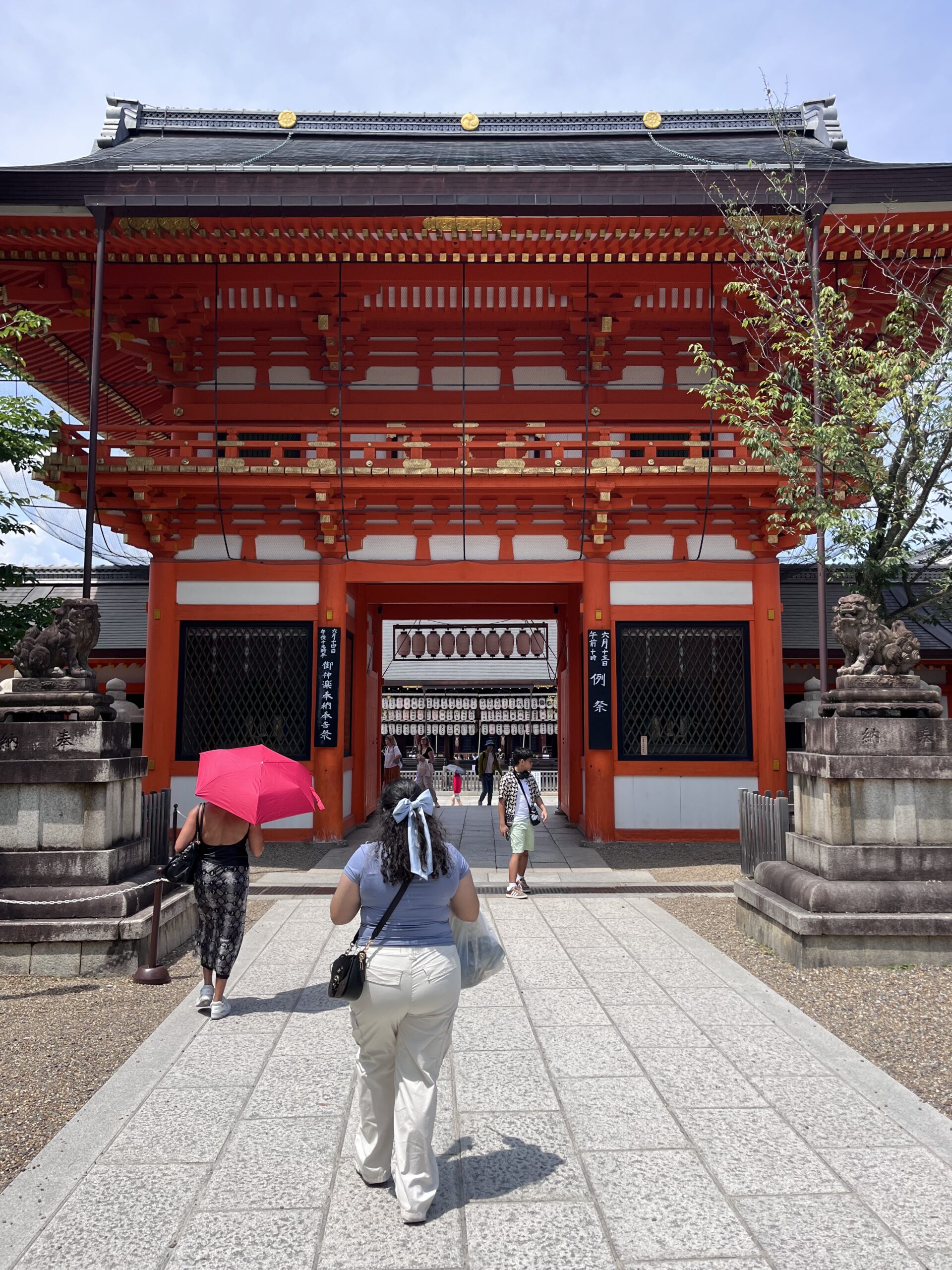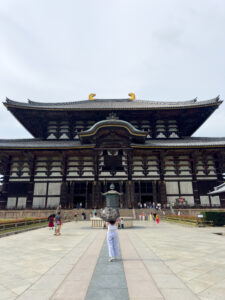
Kyoto is a city that greatly values and exquisitely preserves tradition because of its rich history and cultural legacy. To ensure a courteous and enriching experience, you must know the local customs and etiquette as you explore its historic districts, tranquil gardens, and old temples. Here’s what to do and what not to do when visiting Kyoto’s traditional sites.
Do: show respect at temples and shrines
Kyoto boasts approximately 2,000 temples and shrines, showing Kyoto’s and Japan’s rich spiritual and cultural history. It’s crucial to observe and be aware of regional traditions and manners when visiting these hallowed locations to demonstrate respect and guarantee a memorable experience.
Before you go, learn about the temple’s background, importance and particular regulations. Certain temples could have exclusive practices or prohibited zones. It is expected to have to take off your shoes before entering temple buildings, so make sure your shoes are easy to put on and take off.
When entering temple grounds, it is traditional to bend slightly as a symbol of respect. Many temples and shrines have a purification fountain where visitors can cleanse their hands and mouths before entering. When using the hand-washing station called temizuya, one should use your right hand, pick up the hishaku, a type of ladle, and pour water over your left hand. Then, refillig the hishaku, pour water over your right hand after switching hands. To rinse your mouth, pour water into your left palm, and do not touch the hishaku to your lips. After giving your left hand another rinse, hold the spoon vertically to let the remaining water pour over the handle, thereby cleansing it.
When exploring the temple grounds, keeping your voice down and avoiding running and making loud noises are important. Temples are locations for prayer and worship. Observe signs that may prohibit photography or restricted certain areas. There may be areas of the temple that are off-limits to guests. Speaking of photography, only take photos where allowed, avoid using flash, which can be disruptive, respect the privacy of worshippers, and do not take pictures of them without permission.
When visiting Kyoto’s temples, following the correct protocol for these sacred spaces and the traditions they uphold is essential. You may improve your own experience and help preserve these cultural treasures by adhering to these guidelines. Being kind and having good manners guarantees a meaningful and respectful visit.
Don’t: eat and drink in sacred areas
It is vital to abstain from eating and drinking within Kyoto’s shrines and temples for various reasons, including cultural sensitivity, hygiene and respect. Here’s a detailed explanation of the significance of this practice.
Temples and shrines are sacred places for meditation, prayer and worship. Eating and drinking in these places may be regarded as an insult to the deities and the spiritual environment they represent. Respect for sacred sites is highly valued in Japanese society. Eating and drinking in such places may be seen as culturally insensitive. Food and drinks can produce litter, which ruins the temple or shrine grounds. The sacredness and visual appeal of the location must be preserved by keeping the surrounding area clean. Food scraps can draw pests, including animals and insects, that can harm buildings and ruin the serene environment. Pests can damage the well-tended plants and structures seen in shrines and temples.
By not eating and drinking in shrines and temples, tourists help maintain the cleanliness and order of these important cultural landmarks, ensuring they remain in good condition for future generations. This modest act of respect goes a long way toward appreciating the rich spiritual culture of Kyoto’s shrines and temples.
Do: use respectful language
It is important to use courteous language when visiting Kyoto’s traditional locations for numerous reasons, including cultural norms, etiquette and a desire to demonstrate respect for the host culture. Here is a closer look at the reason polite language matters.
Respect is highly valued in Japanese society, especially for seniors, authorities, deities and places of worship. Speaking politely shows that one is aware of and respects these cultural customs. Maintaining peaceful social interactions in Japan largely depends on politeness and respect. In traditional settings, guests contribute to a polite and cheerful ambiance by speaking with appropriate language. While speaking to locals or temple employees, make sure to use courteous language and expressions like “arigatō gozaimasu,” which translates to thank you very much, and “sumimasen,” which translates to pardon me or sorry.
Speaking politely can improve how fully immersed you feel when visiting Kyoto’s historic locations. Visitors can bond more closely with Japanese customs, culture and locals. It can result in a more pleasant exchange with locals and employees, enhancing your visit. By speaking politely, guests create a friendly and welcoming environment for other guests and serve as an example for others.
Don‘t: walk on tatami mats in shoes
In Japanese culture, tatami mats are used for sleeping, sitting and other purposes. Here is a closer look at why shoes should never be worn on tatami mats.
Because tatami mats are composed of delicate, natural materials, moisture from shoes and dirt may destroy them. Wearing shoes when walking on tatami can cause stains, odor and other damage that are hard to eliminate. Keeping tatami mats clean is essential to maintaining hygienic spaces. Shoes can track in dirt, bacteria and other impurities that could ruin the mat’s cleanliness.
Walking on tatami with shoes on can be difficult and dangerous because they can slop or catch on the mats’ soft surfaces. Walking on tatami is softer and more comfortable if shoes are taken off first. Traditional Japanese tatami mat flooring is prized for its aesthetic appeal and practicality. Future generations will be able to appreciate their ascetic and cultural significance if they are preserved in good condition.
When visiting Kyoto’s traditional locations, respecting local customs and traditions is essential. You may have a courteous and meaningful experience and properly enjoy this historic city’s beauty and cultural diversity by adhering to these do’s and don’ts.
Whether you’re visiting bustling historic districts, tranquil parks, or old temples, your considerate actions will improve your stay and make a good impression on the locals.







